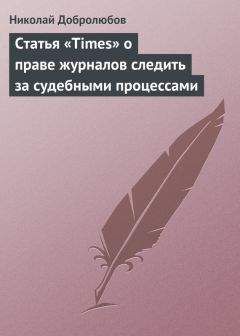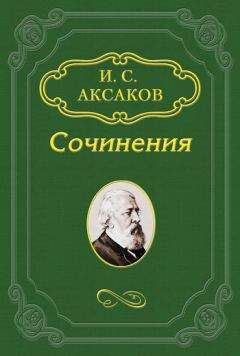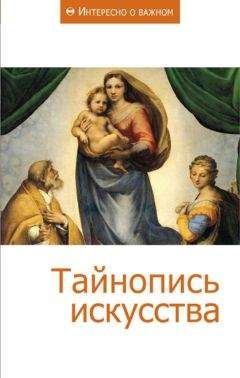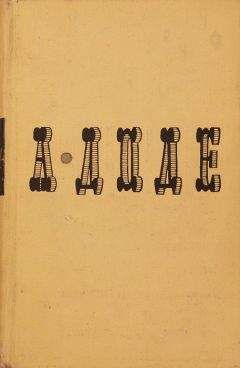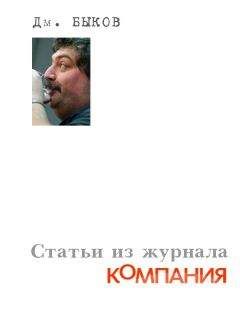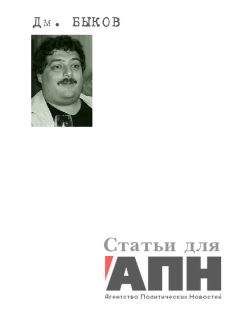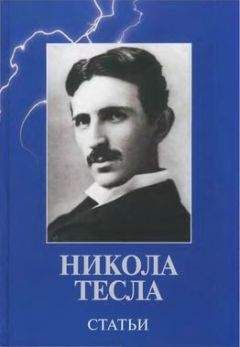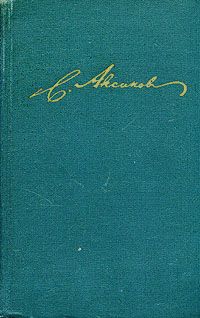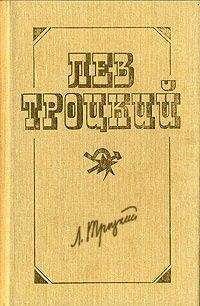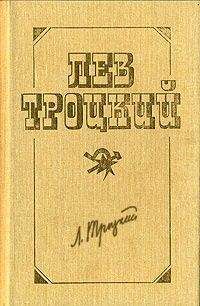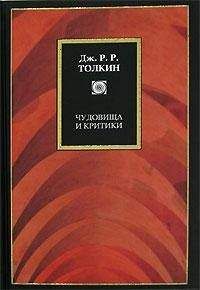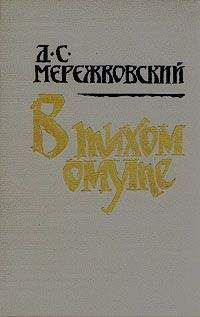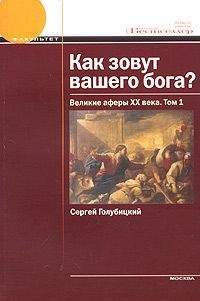Алексей Минченков - Glimpses of Britain. Reader
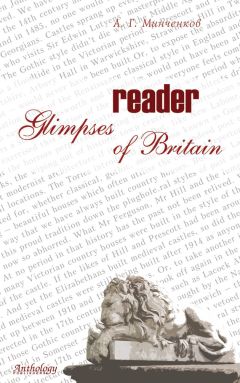
Все авторские права соблюдены. Напишите нам, если Вы не согласны.
Описание книги "Glimpses of Britain. Reader"
Описание и краткое содержание "Glimpses of Britain. Reader" читать бесплатно онлайн.
Хрестоматия содержит подборку статей из современных газет и журналов, иллюстрирующих многие темы, рассматриваемые в основных главах пособия Glimpses of Britain. Статьи расположены в произвольном порядке, они не адаптировались и не сокращались, был полностью сохранен авторский стиль и пунктуация. Таким образом, статьи представляют разный уровень сложности, в зависимости от индивидуального стиля автора.
Glimpses of Britain. Reader
Автор-составитель А. Г. Минченков
© Минченков А. Г., 2006
© Антология, 2006
Prescott’s folly
by Roy Strong
Daily Mail, August 5, 2004
So, New Labour’s control police have struck again. In its infinite wisdom, John Prescott’s department has announced that all new large country houses must be based on modern and innovative architecture rather than replication of the past.
The ignorant Keith Hill, Housing and Planning Minister, wants to change “the face of new country house architecture from a pastiche of historical styles to innovative cutting-edge design… creating buildings that people will want to visit in 100 years’ time”.
The arrogance of such a remark is mind-blowing. What right has any government, short of a fascist Mussolini-style dictatorship, to lay down architectural style for anyone? What right has Hill – no architectural expert himself – to dismiss the distinguished work of a raft of today’s architects as “pastiche”?
And is it any surprise that New Labour crony Lord Rogers – he of the ghastly Dome, which is still swallowing oceans of taxpayers’ money four years on from the millennium – is one of the few who welcomes the decision as “tremendous news”?
This appalling ignorance of our architectural history is shared, somewhat surprisingly, by George Ferguson, President of the Royal Institute of British Architects, who also applauds the Government’s stance with these words: “The country house has, throughout the ages, been one of the defining elements of our architectural and social history.”
That sounds all right, but what he does not say is that the architectural and social history to which he refers has been written by our ability to use the architectural styles of past and adapt them for modern-day living. But this “revivalism” is the very concept that is now so abhorred. What Mr Ferguson, Mr Hill and the lumpen John Prescott betray is a profound ignorance of this country’s architectural history. At no period in that history has the past not been relived. We have always looked back while simultaneously embracing the new. That is why so many Victorian country houses were built in the style of the 14th century and yet included every up-to-date mod con. Take the medieval form of the castle. If the likes of Hill and Prescott had been around in 1485, no one would have been allowed to build one after the Wars of the Roses.
And yet the Elizabethans built medieval castles, so did the Georgians. Castles sprang up everywhere through the Regency and Victorian periods, and medieval castles were still being built after 1914 as anyone who visits Sir Edwin Lutyens’ masterpiece Castle Drogo in Devon – which went up between 1910 and 1930 – knows.
Or, to take another instance. The Gothic style didn’t die with the Middle Ages. Gothic churches were erected in the 17th century and Gothic took off again in the 18th, rising to a floodtide in the Victorian period.
If Prescott and Hill had their way, all those Gothic country house masterpieces such as Lacock Abbey in Wiltshire, Arbury Hall in Warwickshire, Strawberry Hill in Twickenham or Tyntesfield in Somerset – which has just been bought by the National Trust – would never have been built.
Or, to expose the absurdity even further, Inigo Jones’s 17th century Queen’s House at Greenwich – the foundation stone of the Renaissance classical style in England and based on the architecture of ancient Rome – would have been vetoed. You could even say that Chatsworth and Blenheim would not have been allowed.
There is absolutely nothing to be ashamed of in an architectural style which offers a strong evocation of the past. Almost everyone feels comfortable with something that recalls our common history.
The last time the Government exercised this kind of control was in the post-war period when, under the aegis of Labour, the modernists dominated local planning.
We now lament the horrors perpetrated during the Sixties by architects driven on by disastrous social-engineering projects which resulted in hideous tower blocks, the wiping out of historic town centres and horrendous shopping malls and community centres.
Let me say at once that I have nothing against modernist architecture if it is good. But, like New Labour, it is and has always been essentially urban – a style not easily transported to rural locations.
The Tories introduced legislation known as Gummer’s Law, which allowed new country houses to arise in whatever style the owner opted for, whether classical, gothic, modernist or indeed post-modernist.
As a consequence there was a renaissance in country house building – beautiful houses which often utilise the classical repertory of the past but are, at the same time, very much of their own day. They epitomise the way that we have always built country houses.
But New Labour, in its ignorance and desire to control how people should live, has simply flushed this proud tradition down the plughole.
The first media queen
by Dr John Plunkett
BBC History, April 2003
The Queen’s diaries are a popular bestseller, yet her photographs are allegedly manipulated by retouchers. There are calls for the Prince of Wales to show himself more to the people, yet his engagement photographs are criticised for being too intimate and revealing. No, these are not the feverish dreams of an editor of one of today’s Fleet Street tabloids, but episodes that did take place – in the 19th century.
A charged relationship between the monarchy and the media is not a new concern. Queen Victoria was the first monarch to cope with the type of attention that has since become the norm for the British monarchy. During Victoria’s reign, the royal family was a beneficiary of a new mass print and visual culture, but was subjected simultaneously to its demands and intrusions. In conjunction with industrialisation and constitutional reform, a popular publishing industry helped reinvent the position of the monarchy in national life.
The first decade of the reign coincided with the growth of popular weekly newspapers and the first periodicals devoted to graphic news. The News of the World began publication in October 1843, six years after Victoria’s accession. It belonged to a new genre of newspapers aimed at a readership unable to afford a daily paper, and which lacked the leisure to read one. Matching this growth were the more expensive illustrated periodicals supplying graphic news. The Illustrated London News began its long life in May 1842, and was soon joined by several imitators. Prior to this, very few newspapers had provided illustrations of contemporary events. The development of illustrated periodicals and a popular press played a significant role in creating a new style of monarchy, one built around an increasingly public role. During the 1840s and 1850s, Victoria and her husband Albert undertook an unprecedented number of civic engagements, regional tours and international visits. The publicity these received helped promote an image of a monarchy in touch with its subjects.
Emotional interactionIllustrated newspapers also created an emotional interaction with the royal family by showing intimate details of palace life. Its artists adopted the position of confidential onlookers. In an engraving produced by The Illustrated London News of the visit of the French king, Louis-Philippe, a state visit was turned into a domestic occasion. Press coverage provided an intimate experience of the public and domestic activities of the royal family. The creation of Victoria as a popular monarch was inseparable from the way her life was presented as royal news. In 1868, extracts from her journal of her journeys in the Scottish Highlands sold over 100,000 copies.
Despite the political benefits that Victoria and Albert received from their fulsome coverage, reporters were kept at arm’s length by the court. Newspapers were only allowed limited access to royal events. Journalists had a low social status and were far from being regarded as “Gentlemen of the Press”. Courtiers were unwilling to acknowledge their role in creating an intimate bond between monarchy and subject. At the wedding of the Princess Royal in January 1857, only ten journalists were granted official access to St James’s Palace. Reporters were seated high up in the Chapel Royal. Spencer Ponsonby, the Lord Chamberlain’s assistant, chose this position because “it would be more out of the way than any other place in the Chapel, for I suppose we could not call upon the reporters to wear full [Court] dress”. Reporters could not be excluded; nevertheless they were placed at the edge of proceedings. Ponsonby compensated for the reporters’ lack of court dress by having a red silk curtain screen off the members of the press.
The wedding established an etiquette of journalistic invisibility. This semiofficial understanding between reporters and courtiers did not, however, prevent fractious encounters. At Balmoral in the early 1870s, there was often a carriage of journalists ever eager to follow Victoria. Protocol meant that they were nevertheless expected to stay out of sight. On one occasion, a carriage of reporters was following Victoria on a drive, only to be caught unawares when her carriage suddenly turned around. The reporters’ carriage was forced into a ditch in order to let her pass. She reportedly had a hearty laugh at their expense.
The wariness of the royal household towards the media was far from unwarranted. Royal reportage was attacked for its intrusive practices and purple prose. Journalists veered between intrusion and idolatry. Satirical journals such as Punch frequently attacked the sycophantic coverage of Victoria. The deferential language of royal reporting was claimed to falsify the gloss of the monarchy in the same way that its true nature had formerly been hidden by the ceremonial court splendour. In 1846, Punch published a mock proclamation from Victoria to the press, demanding that “all Vain, Silly, and Sycophantic verbiage shall cease, and good, Straightforward, Simple English be used in all descriptions of all Progresses made by Ourself, Our Royal Consort and Our Dearly Beloved Children”.
The court newsman was one means by which the monarchy pro-actively influenced its press coverage. Photographs of the royal family were subject to an even more subtle form of manipulation. The release of the first public royal photographs, in August 1860, was a huge success. The intimacy and realism of the camera emphasized Victoria’s ordinariness. Indeed, Victoria’s initial photographs were renowned for being less than flattering, while engagement pictures of the Prince of Wales and Princess Alexandra in 1862 were criticized for being too intimate. After the 1880s, though, many royal photographs were retouched in the same way that celebrity photographs are now digitally airbrushed. Blemishes and wrinkles were removed, waistlines narrowed and dark shadows lightened. Retouching was common, undertaken partly due to sitter’s vanity and partly to technical imperfections in the negative.
A photograph taken by the Bassano Studio in 1882 demonstrates the extent to which Victoria’s photographs were altered. In the picture, her cheeks and jowls have received attention from the retoucher. The removal of flesh from under her chin is evident in that the area there has a lighter tone. The tiny queen has also been placed on a platform to accentuate her height. Reviews of Victoria’s later photographs complained that her subjects were unable to get a truthful portrait. In August 1887, Photographic News disparagingly noted that a new set of pictures, were, like all published portraits of the Queen, fabricated. It complained that the public had to be content with a “mixture of photography and monochrome intricacy”. Significantly, the Photographic News presumed that, because the photographs had been made available, they had inevitably been manipulated. The Crown might never die but Victoria’s photographs were concerned with showing a monarch whom age did not touch. It was not simply that Victoria seemed an unchanging figure in a disorienting world: judging by her photographs she was unchanging.
A dying QueenThe media attention received by the royal family during the 19th century culminated in the death and funeral of Queen Victoria in January 1901. As the Queen lay dying at Osborne House on the Isle of Wight, hundreds of British and foreign journalists gathered at the gates to receive the latest bulletins on her condition. Crowds waited at telegraph stations all over the British Empire for news of the Great White Empress. The telegraph network helped to bring together nation and empire in one global community. There were nevertheless numerous incidents of disreputable journalistic behaviour during Victoria’s final illness. The episode that caused the most public outrage took place after the Queen’s death was announced to the press pack waiting at the Osborne gates. Immediately, they rushed to East Cowes telegraph office to relay the news to the waiting world, some running, some on bikes, and some on horseback. Many shouted “The Queen is Dead!” in their headlong charge. Such disrespect was widely condemned.
Several newspapers also printed fake reports of the events around the Queen’s deathbed. The Press Association news agency put out a spurious interview with one of the physicians attending the Queen, while one illustrated newspaper published a sketch of a touching death-bed reconciliation between Victoria and her grandson, Kaiser Wilhelm II of Germany. Court officials were assiduous in tracking down those responsible for these fabrications. With access to all messages sent from Osborne, they were able to confirm which reports had been invented. At least two correspondents promptly found themselves recalled to their newspaper’s offices after the intervention of courtiers. All these incidents of journalistic sharp practice were widely commented upon, accentuating Victoria’s death as a media event.
The growth of a mass media helped to maintain the royal family as an overarching yet intimate presence. Like a Russian doll, the icon of Victoria was made up of countless different smaller versions. Her status as national and imperial figurehead and her promotion as the Mother of her People, have to be understood in relation to the growth of different media. In terms of the media making of the monarchy, Victoria and Albert set precedents that continue to play an important role in defining the representation of the royal family today. Subsequently the media were assimilated into practices that they had first established. Thus, whereas Victoria and Albert’s royal tours were broadcast via the new illustrated press, the imperial tours of their children and grandchildren received comparably novel coverage from the new cinematograph. Important 20th century continuations of this relationship include the first Christmas Day radio broadcast by George V in 1932; the televising of the coronation of Elizabeth II in 1953; and the royal wedding of Prince Charles to Lady Diana Spencer, in 1981.
1966 and all what?
Подписывайтесь на наши страницы в социальных сетях.
Будьте в курсе последних книжных новинок, комментируйте, обсуждайте. Мы ждём Вас!
Похожие книги на "Glimpses of Britain. Reader"
Книги похожие на "Glimpses of Britain. Reader" читать онлайн или скачать бесплатно полные версии.
Мы рекомендуем Вам зарегистрироваться либо войти на сайт под своим именем.
Отзывы о "Алексей Минченков - Glimpses of Britain. Reader"
Отзывы читателей о книге "Glimpses of Britain. Reader", комментарии и мнения людей о произведении.






